Showing Spotlights 1953 - 1960 of 2780 in category All (newest first):
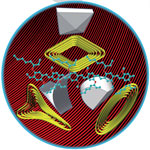 To date, a number of nanotechnology fabrication studies have focused on creating hierarchically ordered nanostructures using lithographic techniques. However, lithographic methods involve high processing and maintenance costs, and require an iterative, multi-step procedure that makes the structure formation process more complex and less reliable. By contrast, a novel nanofabrication method is fast and cost-effective, dispensing with the need for multistage lithography and externally applied fields. This new technique needs only a drop of diblock polymer solution, a curved upper surface and a flat silicon substrate, and a selective solvent. This is the first study of creating hierarchically ordered nanostructures composed of block copolymers with unprecedented regularity by controlled evaporative self-assembly.
To date, a number of nanotechnology fabrication studies have focused on creating hierarchically ordered nanostructures using lithographic techniques. However, lithographic methods involve high processing and maintenance costs, and require an iterative, multi-step procedure that makes the structure formation process more complex and less reliable. By contrast, a novel nanofabrication method is fast and cost-effective, dispensing with the need for multistage lithography and externally applied fields. This new technique needs only a drop of diblock polymer solution, a curved upper surface and a flat silicon substrate, and a selective solvent. This is the first study of creating hierarchically ordered nanostructures composed of block copolymers with unprecedented regularity by controlled evaporative self-assembly.
Sep 30th, 2009
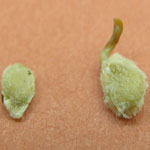 To what degree nanoparticles are uptaken by plants and what their effect is on plant development is an important issue in determining the environmental impact of nanomaterials. Previously we have covered several research projects that have begun to explore nanotechnology's impact on major food crops and some of them have demonstrated quite a negative impact. But some research results also show a possible positive effect, like a recent study that demonstrates that carbon nanotubes (CNTs) can dramatically accelerate the germination and growth of tomato seeds. Work like this contributes to an important body of interdisciplinary research where nanotechnology, plant biology and biotechnology converge to open new perspectives for solving some of the important challenges of our times such as increased food and biofuel production.
To what degree nanoparticles are uptaken by plants and what their effect is on plant development is an important issue in determining the environmental impact of nanomaterials. Previously we have covered several research projects that have begun to explore nanotechnology's impact on major food crops and some of them have demonstrated quite a negative impact. But some research results also show a possible positive effect, like a recent study that demonstrates that carbon nanotubes (CNTs) can dramatically accelerate the germination and growth of tomato seeds. Work like this contributes to an important body of interdisciplinary research where nanotechnology, plant biology and biotechnology converge to open new perspectives for solving some of the important challenges of our times such as increased food and biofuel production.
Sep 29th, 2009
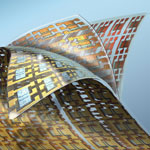 Here is the book you all have been waiting for: Nano-Society - Pushing the boundaries of technology. Written by Nanowerk's Michael Berger, this book puts a spotlight on some of the scientists who are pushing the boundaries of technology and it gives examples of their work and how they are advancing knowledge one little step at a time. Nano-Society is the latest addition to RSC Publishing's Nanoscience and Nanotechnology series. Edited by Sir Harry Kroto, Paul O'Brien, and Harold Craighead, the series provides a comprehensive source of information on research associated with nanostructured materials and miniaturized lab-on-a-chip technologies. The book covers 122 very specific research projects that are happening in laboratories around the world and provides commentaries from the scientists in their own words.
Here is the book you all have been waiting for: Nano-Society - Pushing the boundaries of technology. Written by Nanowerk's Michael Berger, this book puts a spotlight on some of the scientists who are pushing the boundaries of technology and it gives examples of their work and how they are advancing knowledge one little step at a time. Nano-Society is the latest addition to RSC Publishing's Nanoscience and Nanotechnology series. Edited by Sir Harry Kroto, Paul O'Brien, and Harold Craighead, the series provides a comprehensive source of information on research associated with nanostructured materials and miniaturized lab-on-a-chip technologies. The book covers 122 very specific research projects that are happening in laboratories around the world and provides commentaries from the scientists in their own words.
Sep 28th, 2009
 Sand. Shrubs. Burst tires. More sand. The last thing you would expect as you drive along the Red Sea near Mecca is to encounter an ultramodern science city. Yet there it is. Appearing after an 80 kilometer drive from Jeddah, Saudi Arabia's second-largest city, the 36 square kilometer campus of King Abdullah University for Science and Technology (KAUST) appears like a Fata Morgana out of the desert sand. Yesterday, September 23rd, King Abdullah of Saudi Arabia officially opened the country's most modern and ambitious university near the old fishing village of Thuwal. Nanowerk was invited to attend the spectacular opening ceremony. Much more than a future elite university, the vision behind KAUST is to create the nucleus of a modern society, free from the strict religious dictates of a conservative Islamic culture, and laying the foundation for a science and technology based society of future generations.
Sand. Shrubs. Burst tires. More sand. The last thing you would expect as you drive along the Red Sea near Mecca is to encounter an ultramodern science city. Yet there it is. Appearing after an 80 kilometer drive from Jeddah, Saudi Arabia's second-largest city, the 36 square kilometer campus of King Abdullah University for Science and Technology (KAUST) appears like a Fata Morgana out of the desert sand. Yesterday, September 23rd, King Abdullah of Saudi Arabia officially opened the country's most modern and ambitious university near the old fishing village of Thuwal. Nanowerk was invited to attend the spectacular opening ceremony. Much more than a future elite university, the vision behind KAUST is to create the nucleus of a modern society, free from the strict religious dictates of a conservative Islamic culture, and laying the foundation for a science and technology based society of future generations.
Sep 24th, 2009
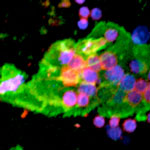 Bionanotechnology researchers are experimenting with techniques for attaching DNA nanoarrays to cell surfaces for various reasons: to label cell surfaces with functionalized micrometer-sized patches; to deliver materials such as nanoparticles or carbon nanotubes to cell surfaces; to deliver nucleic acids into the cell for gene silencing; or to engineer microtissues of cell/cell networks by using self-hybridizing properties of single stranded DNA molecules. A team of scientists in California has now successfully attached self-assembled DNA structures to cancer cells using two different methods. This is one of the first illustrations of the biomedical relevance of DNA arrays.
Bionanotechnology researchers are experimenting with techniques for attaching DNA nanoarrays to cell surfaces for various reasons: to label cell surfaces with functionalized micrometer-sized patches; to deliver materials such as nanoparticles or carbon nanotubes to cell surfaces; to deliver nucleic acids into the cell for gene silencing; or to engineer microtissues of cell/cell networks by using self-hybridizing properties of single stranded DNA molecules. A team of scientists in California has now successfully attached self-assembled DNA structures to cancer cells using two different methods. This is one of the first illustrations of the biomedical relevance of DNA arrays.
Sep 22nd, 2009
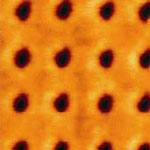 In developing next generation data storage devices, researchers are employing a variety of nanotechnology fabrication and patterning techniques such as electron-beam lithography, photolithography, microcontact printing, nanoimprinting and scanning probe microscope-based lithography. A decade ago, IBM for instance introduced the Millipede Project, a thermomechanical AFM-based nanopatterning technique that was aimed at data storage systems. While this system required an AFM tip heated to 350 degrees centigrade, researchers in Korea have now demonstrated that the writing, reading, and erasure of nanoscopic indentations on a polymeric film can be achieved by using an AFM tip at room temperature - no heating required.
In developing next generation data storage devices, researchers are employing a variety of nanotechnology fabrication and patterning techniques such as electron-beam lithography, photolithography, microcontact printing, nanoimprinting and scanning probe microscope-based lithography. A decade ago, IBM for instance introduced the Millipede Project, a thermomechanical AFM-based nanopatterning technique that was aimed at data storage systems. While this system required an AFM tip heated to 350 degrees centigrade, researchers in Korea have now demonstrated that the writing, reading, and erasure of nanoscopic indentations on a polymeric film can be achieved by using an AFM tip at room temperature - no heating required.
Sep 18th, 2009
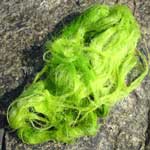 The batteries that power our everyday devices, from laptop computers, to mobile phones, watches, toys and flashlights, are a major source of pollution. The average household in the Western world uses about 20 batteries a year, resulting in hundreds of thousands of tons of discarded batteries that end up in landfills. When the battery casing corrodes, toxic heavy metals like mercury and cadmium can leak out and pollute soil and ground water. Researchers have been working on non-metal batteries but so far the performance of the used materials has not been good enough for commercial applications. One way to improve the performance of nonmetal-based energy storage devices is to use composite electrode materials of conductive polymers, deposited as thin layers on a suitable large surface area substrate. Researchers have now developed a novel polypyrrole-cellulose composite electrode material that is mechanically robust, lightweight, and flexible.
The batteries that power our everyday devices, from laptop computers, to mobile phones, watches, toys and flashlights, are a major source of pollution. The average household in the Western world uses about 20 batteries a year, resulting in hundreds of thousands of tons of discarded batteries that end up in landfills. When the battery casing corrodes, toxic heavy metals like mercury and cadmium can leak out and pollute soil and ground water. Researchers have been working on non-metal batteries but so far the performance of the used materials has not been good enough for commercial applications. One way to improve the performance of nonmetal-based energy storage devices is to use composite electrode materials of conductive polymers, deposited as thin layers on a suitable large surface area substrate. Researchers have now developed a novel polypyrrole-cellulose composite electrode material that is mechanically robust, lightweight, and flexible.
Sep 16th, 2009
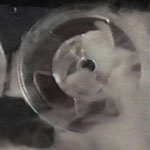 A hallmark of the Mission: Impossible series shows secret agent Phelps receiving his instructions on a tape that then self-destructs and goes up in a cloud of smoke. Existing self-erasing media are much less dramatic, of course. Most of these materials rely on photochromic molecules. One prominent example is an experimental printing technology with reusable paper developed by Xerox and PARC. While writing with light can be both rapid and accurate, photochromic 'inks' are not necessarily optimal for transforming light-intensity patterns into color variations, because they have relatively low extinction coefficients, are prone to photobleaching, and usually offer only two colors corresponding to the two states of photoisomerizing molecules. Researchers at Northwestern University have now developed a new concept that can be used to produce self-erasing pictures. In contrast to previous techniques, their method allows for multicolored pictures.
A hallmark of the Mission: Impossible series shows secret agent Phelps receiving his instructions on a tape that then self-destructs and goes up in a cloud of smoke. Existing self-erasing media are much less dramatic, of course. Most of these materials rely on photochromic molecules. One prominent example is an experimental printing technology with reusable paper developed by Xerox and PARC. While writing with light can be both rapid and accurate, photochromic 'inks' are not necessarily optimal for transforming light-intensity patterns into color variations, because they have relatively low extinction coefficients, are prone to photobleaching, and usually offer only two colors corresponding to the two states of photoisomerizing molecules. Researchers at Northwestern University have now developed a new concept that can be used to produce self-erasing pictures. In contrast to previous techniques, their method allows for multicolored pictures.
Sep 15th, 2009
 To date, a number of nanotechnology fabrication studies have focused on creating hierarchically ordered nanostructures using lithographic techniques. However, lithographic methods involve high processing and maintenance costs, and require an iterative, multi-step procedure that makes the structure formation process more complex and less reliable. By contrast, a novel nanofabrication method is fast and cost-effective, dispensing with the need for multistage lithography and externally applied fields. This new technique needs only a drop of diblock polymer solution, a curved upper surface and a flat silicon substrate, and a selective solvent. This is the first study of creating hierarchically ordered nanostructures composed of block copolymers with unprecedented regularity by controlled evaporative self-assembly.
To date, a number of nanotechnology fabrication studies have focused on creating hierarchically ordered nanostructures using lithographic techniques. However, lithographic methods involve high processing and maintenance costs, and require an iterative, multi-step procedure that makes the structure formation process more complex and less reliable. By contrast, a novel nanofabrication method is fast and cost-effective, dispensing with the need for multistage lithography and externally applied fields. This new technique needs only a drop of diblock polymer solution, a curved upper surface and a flat silicon substrate, and a selective solvent. This is the first study of creating hierarchically ordered nanostructures composed of block copolymers with unprecedented regularity by controlled evaporative self-assembly.
 Subscribe to our Nanotechnology Spotlight feed
Subscribe to our Nanotechnology Spotlight feed





